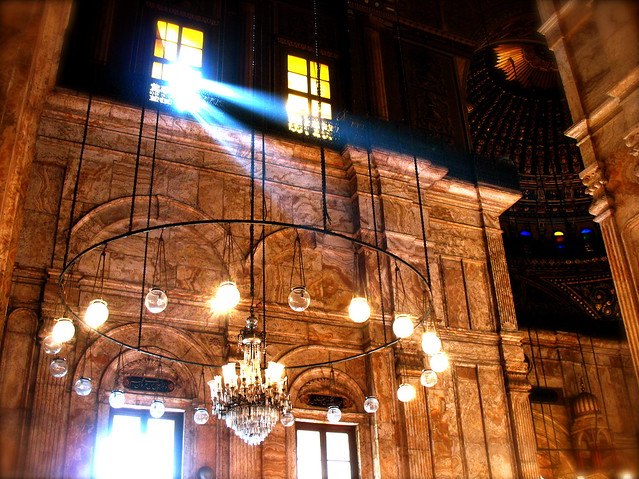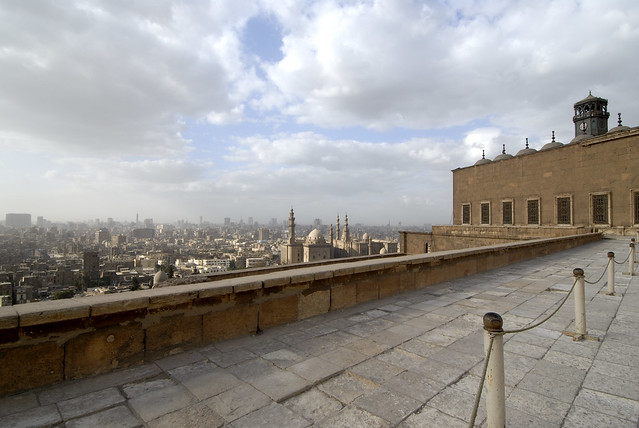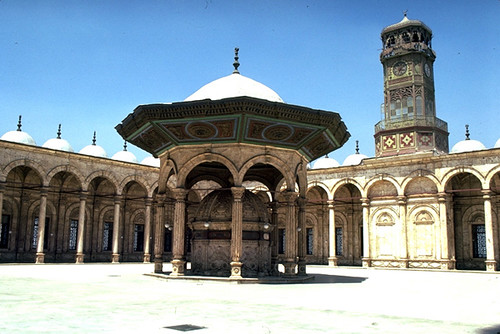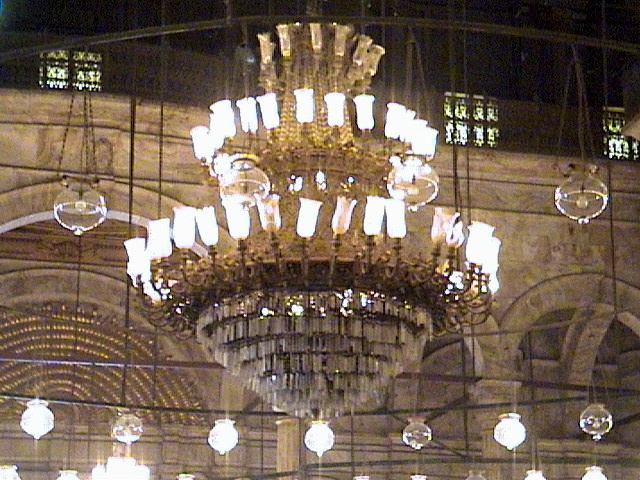
Mosque of Muhammad Ali on right, and the green dome of the Al-Nasir Muhammad Qala'un Mosque on left
he Saladin Citadel of Cairo (Arabic: قلعة صلاح الدين Qalaʿat Salāḥ ad-Dīn) is a medieval Islamic fortification in Cairo, Egypt. The location, on Mokattam hill near the center of Cairo, was once famous for its fresh breeze and grand views of the city. It is now a preserved historic site, with mosques and museums.
19th century history
Mosque of Muhammad Ali on right, and the green dome of the Al-Nasir Muhammad Qala'un Mosque on left.The Citadel is sometimes referred to as Mohamed Ali Citadel (Arabic: قلعة محمد علي Qalaʿat Muḥammad ʿAlī), because it contains the Mosque of Muhammad Ali of (or Mohamed Ali Pasha), which was built between 1828 and 1848, perched on the summit of the citadel. This Ottoman mosque was built in memory of Tusun Pasha, Muhammad Ali's oldest son, who died in 1816.
Cairo Citadel
However, it also represents Muhammad Ali's efforts to erase symbols of the Mamluk dynasty that he replaced. When Ottoman ruler Muhammad Ali Pasha took control from the Mamluks in 1805 he altered many of the additions to the Citadel that reflected Cairo's previous leaders. One obvious change that Muhammad Ali enacted pertained to the uses of the Citadel's northern and southern enclosures.
During the Mamluk period the southern enclosure was the residential area, but Muhammad Ali claimed the northern enclosure as the royal residence when he took power. He then opened the southern enclosure to the public and effectively established his position as the new leader.

The mosque is the other feature of the Citadel that reflects the reign of Muhammad Ali. This feature, with its large dome and overtly Ottoman influenced architecture, looms over the Citadel to this day. Recently destroyed Mamluk palaces within the Citadel provided space for the formidable mosque, which was the largest structure to be established in the early 19th century.

Placing the mosque where the Mamluks had once reigned was an obvious effort to erase the memory of the older rulers and establish the importance of the new leader. The mosque also replaced the mosque of al-Nasir as the official state mosque.

There are two other mosques at the Citadel, the 13th/14th c. hypostyle Al-Nasir Muhammad Qala'un Mosque from the early Bahri Mamluk period, and the 16th c. Mosque of Suleyman Pasha, first of the Citadel's Ottoman-style mosques.






 08:17
08:17
 homesweethome
homesweethome

 Posted in:
Posted in: 








0 意見:
Post a Comment